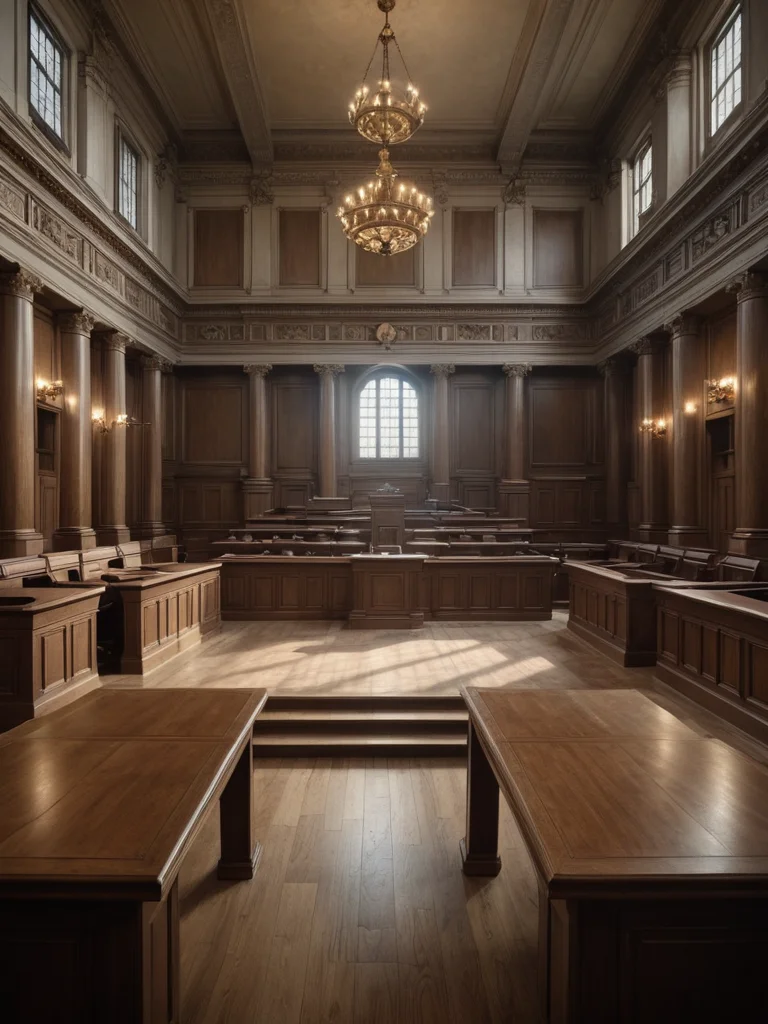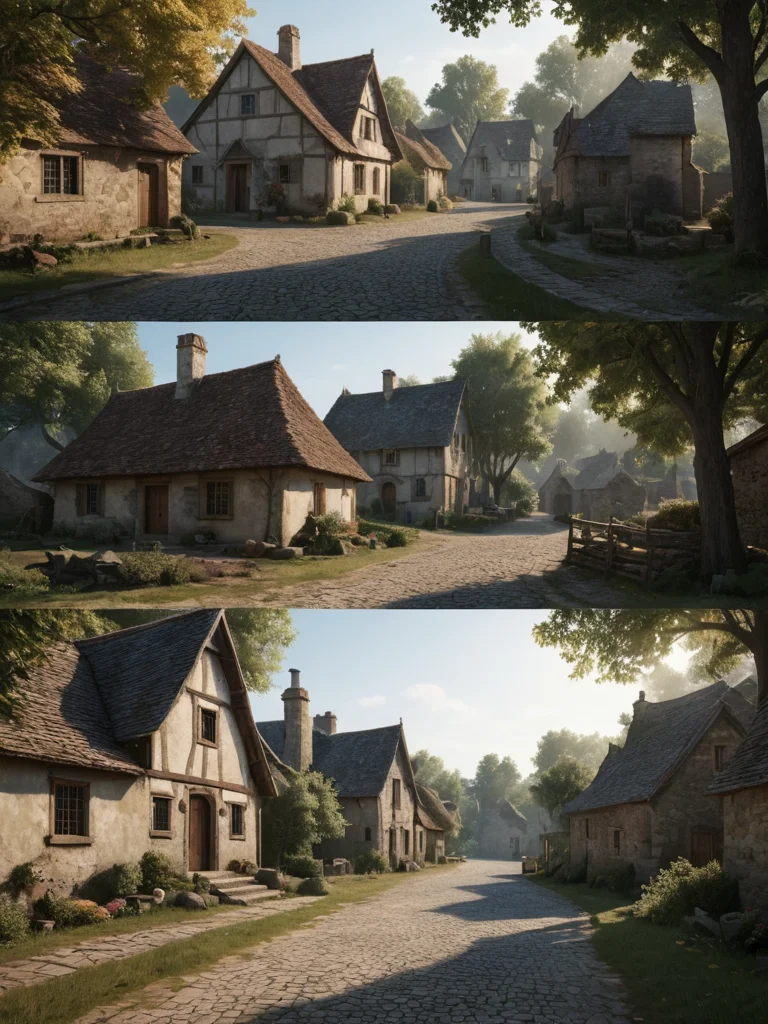The witch hunts that swept across Europe during the late Middle Ages and early modern period are not just a dark chapter of history, full of religious fanaticism and superstition. It is a story of how fear and distrust poisoned relationships between people, turning neighbors into enemies, and everyday life into a nightmare. Accusations of witchcraft often became a tool for settling personal scores, and suspicions fueled by rumors and prejudice destroyed entire communities. In this article, we will examine how the accusation process worked, who most often acted as the accuser, and what consequences this had for European villages.
Introduction: Why Witch Hunts Were a ‘Family Affair’ and How Fear Destroyed Neighborly Relations
Witch hunts were not isolated incidents but a large-scale social catastrophe where fear and suspicion permeated all levels of society. It often became, so to speak, a ‘family affair,’ affecting the lives of many people connected by kinship or proximity. The atmosphere of constant fear destroyed the trust that usually underpins stable social relations. When anyone could become a suspect, even the closest people began to look at each other with suspicion. For example, there are cases where children testified against their parents, and spouses accused each other of witchcraft to save their own lives or gain property.
Historians note that witch hunts particularly affected small rural communities where everyone knew each other, and any deviation from the norm became grounds for gossip. In such conditions, personal animosity, envy, or resentment could easily escalate into serious accusations. For instance, if a neighbor had a richer harvest or healthier livestock, it could arouse envy and suspicion of witchcraft. Thus, witch hunts became not only a religious war against evil but also a tool for resolving personal conflicts and eliminating undesirable individuals.
Imagine a small village where everyone knows each other. Let’s say you have a long-standing quarrel with your neighbor over a boundary line. Suddenly, animals start dying in the village, and the crops wither. It’s very easy to link these events to your enemy and accuse them of casting a spell. And so, a simple everyday conflict turns into a deadly accusation. It’s important to understand that belief in witchcraft was deeply ingrained in the minds of people at that time. They sincerely believed that witches existed and were capable of causing real harm. This fear and conviction made people more susceptible to accusations and more inclined to denounce their neighbors.
An example is the ‘Great Scottish Witch Hunt’ of 1661-1662, where personal animosities and political intrigues played a huge role in the number of accusations. Often, those who were rich and influential were denounced to seize their property, or those who simply displeased the local authorities. Historians claim that several hundred people were executed during this period, many of whom became victims of slander and prejudice.
Who Most Often Became the Accuser: Motives, Examples, and the Influence of Personal Scores on Witchcraft Accusations

Virtually anyone could become an accuser of witchcraft – from a simple peasant to a respected townsman. The motives that drove people to denounce were diverse and often intertwined. Among them were personal animosity, envy, greed, religious fanaticism, and fear of the unknown. It is important to understand that accusing someone of witchcraft gave the accuser a certain power and allowed them to manipulate the situation in their favor.
Personal animosity and envy were among the most common motives for denunciation. If a person had old scores to settle with a neighbor, accusing them of witchcraft could be the perfect way to get revenge. For example, if a woman believed her rival had bewitched her husband, she might accuse her of witchcraft to get rid of her. Envy of someone else’s success or wealth could also lead to denunciation. If a neighbor had a richer harvest or healthier children, it could arouse envy and suspicion of witchcraft.
Greed also played a significant role. In some regions, the property of those convicted of witchcraft was confiscated and transferred to the state or local authorities. This created an incentive for false accusations, especially against wealthy and influential people. For example, if a local landowner had a large debt, he might accuse his creditor of witchcraft to get rid of the debt and seize his property. Such cases were not uncommon and indicate that witch hunts were not only religious persecution but also a tool for economic enrichment.
Religious fanaticism and fear of the unknown also played an important role in motivating accusers. People who sincerely believed in the existence of witches and their ability to cause harm might denounce their neighbors, fearing for their lives and the lives of their loved ones. They believed that by doing so, they were protecting their community from evil and serving God. For instance, if inexplicable events occurred in a village, such as livestock diseases or crop failures, it could be perceived as a manifestation of witchcraft, and people would start looking for culprits among their neighbors.
History knows many examples where personal grudges led to tragic consequences. One of the most famous is the case of the Salem witches in 1692. Many of the accusations in Salem were based on personal grievances and conflicts between the townspeople. For example, several young girls accused Tituba, the servant of the local minister, of witchcraft after she told them stories about magic and sorcery. These accusations quickly spread through the town and led to the arrest and execution of many innocent people.
Typical Signs of a ‘Witch’ in a Neighbor’s Eyes: What Rumors and Prejudices Led to Denunciations

In the perception of people at that time, a witch possessed a number of characteristic signs that could serve as grounds for suspicion and denunciation. These signs were based on rumors, prejudices, and established stereotypes, and often had nothing to do with reality. It is important to understand that the criteria for a ‘witch’ were very vague and subjective, making almost anyone vulnerable to accusations.
One of the most common signs of a ‘witch’ was old age, especially if the woman was single and lived in seclusion. It was believed that elderly women without family and support were more prone to witchcraft, as they harbored resentment and envy towards happier people. Furthermore, single women often practiced healing and herbalism, which also aroused suspicion, as their knowledge could be interpreted as the use of magic.
Appearance also played a significant role. It was believed that witches had special physical characteristics, such as moles, warts, or birthmarks, which were considered ‘devil’s marks.’ Any physical peculiarity that distinguished a person from others could be grounds for suspicion. For example, if a woman had red hair or a squint, it could arouse dislike and suspicion of witchcraft.
Behavior was also an important criterion. Women who were too independent, self-confident, or did not conform to generally accepted norms of behavior could be accused of witchcraft. It was believed that witches did not obey the authority of the church and did not respect societal customs. For instance, if a woman was too intelligent and educated, or if she openly expressed her opinion, it could arouse suspicion of witchcraft.
Rumors and prejudices also played a significant role in shaping the image of a ‘witch.’ The spread of negative rumors about a person could easily lead to them being accused of witchcraft. For example, if a woman was said to have cursed someone’s harvest or inflicted disease on livestock, it could be sufficient grounds for denunciation. It is important to understand that rumors could spread very quickly and become distorted along the way, turning innocent actions into sinister manifestations of witchcraft.
An example is the story of Agnes Sampson, a Scottish midwife who was accused of witchcraft in 1591. She was accused of causing a storm to sink the ship carrying King James VI. The accusations were based on rumors and the testimony of other women who claimed to have seen Agnes participating in covens and performing magical rituals. As a result, Agnes was found guilty and burned at the stake.
The Mechanism of Denunciation: How Accusations Proceeded, from Rumors to Trial, and Why Silence Was Dangerous

The mechanism of denouncing a witch was a complex and dangerous procedure that could begin with a simple rumor or suspicion and end in torture and execution. It is important to understand that during the witch hunt era, any accusation of witchcraft was taken very seriously, and the suspected person was in an extremely vulnerable position. Silence in such a situation was dangerous, as it could be interpreted as an admission of guilt, but active defense could also arouse suspicion.
The first stage of accusation usually involved rumors and suspicions. If people started talking about someone practicing witchcraft, it could lead to them being avoided and treated with suspicion. Rumors could spread very quickly and become distorted along the way, turning innocent actions into sinister manifestations of magic. For example, if a woman accidentally spilled milk, it could be interpreted as a curse on the livestock.
The second stage was the formal accusation. This usually happened after inexplicable events occurred in the village, such as livestock diseases, crop failures, or deaths. Local residents would gather and discuss who might be responsible for these misfortunes. If suspicions fell on a particular person, they might be summoned for questioning by the local priest or a representative of the authorities.
The third stage was the trial. If the accused did not admit guilt, they might be subjected to torture to force a confession. Torture was cruel and inhumane, and often led to false confessions. For example, the accused could be stretched on the rack, branded with hot iron, or deprived of sleep and food. It is important to understand that during the witch hunt era, a trial was not so much an attempt to establish the truth as a way to confirm existing suspicions.
The fourth stage was execution. If the accused confessed or was found guilty based on witness testimony or other evidence, they were sentenced to death. Witches were usually burned at the stake, as it was believed that fire purified from evil. The execution was a public spectacle and was intended as a warning to others.
History knows many examples where innocent people became victims of false accusations and cruel torture. One of the most famous is the case of Johanna Mergenthaler, a woman from Germany who was accused of witchcraft in 1665. She was accused of inflicting disease on the local countess. Johanna was subjected to brutal torture and eventually confessed to witchcraft. She was sentenced to death and burned at the stake.
Tragic Consequences: How Witch Hunts Forever Changed the Face of European Villages and What We Can Learn from This Lesson Today

The witch hunts left a deep and tragic mark on European history. They led to the deaths of thousands of innocent people, destroyed families and communities, and created an atmosphere of fear and distrust. It is important to understand that the consequences of the witch hunts were not only physical but also psychological. They forever changed the face of European villages and left scars on the collective memory of people.
The witch hunts led to the deaths of thousands of innocent people. The exact number of victims is unknown, but historians estimate it to be in the tens of thousands. Most victims were women, especially the elderly and single. But men, children, and even priests also suffered. It is important to understand that each victim is a tragedy, and each death is a loss to society.
The witch hunts destroyed families and communities. Accusations of witchcraft often led to the rupture of family ties and expulsion from the community. Children could testify against their parents, and spouses could accuse each other. Those accused of witchcraft became outcasts and lost all their rights. Their property was confiscated, and they were deprived of the opportunity to lead a normal life.
The witch hunts created an atmosphere of fear and distrust. When anyone could become a suspect, people began to look at each other with suspicion. Trust between neighbors and friends disappeared, and people were afraid to express their opinions or help others. This atmosphere of fear and distrust poisoned life in European villages and hindered societal development.
Today, we can draw important lessons from the history of witch hunts. It reminds us of how dangerous prejudice, stereotypes, and ignorance are. It teaches us to think critically and not to blindly believe rumors and speculation. It shows us how important it is to protect human rights and fight against discrimination and injustice. And, finally, it reminds us of the importance of maintaining humanity and compassion, even in the most difficult times.
An example of how we can learn from the history of witch hunts is the fight against discrimination and prejudice in modern society. We must remember that every person has the right to respect and dignity, regardless of their age, gender, race, religion, or social status. We must fight against any manifestations of discrimination and injustice, and protect the rights of those who are vulnerable.
The history of witch hunts is a dark page of the past, but it can also serve as a lesson for the future. We must remember what happened and do everything possible to prevent similar tragedies from recurring. Only then can we build a just and humane society where everyone feels safe and secure.
